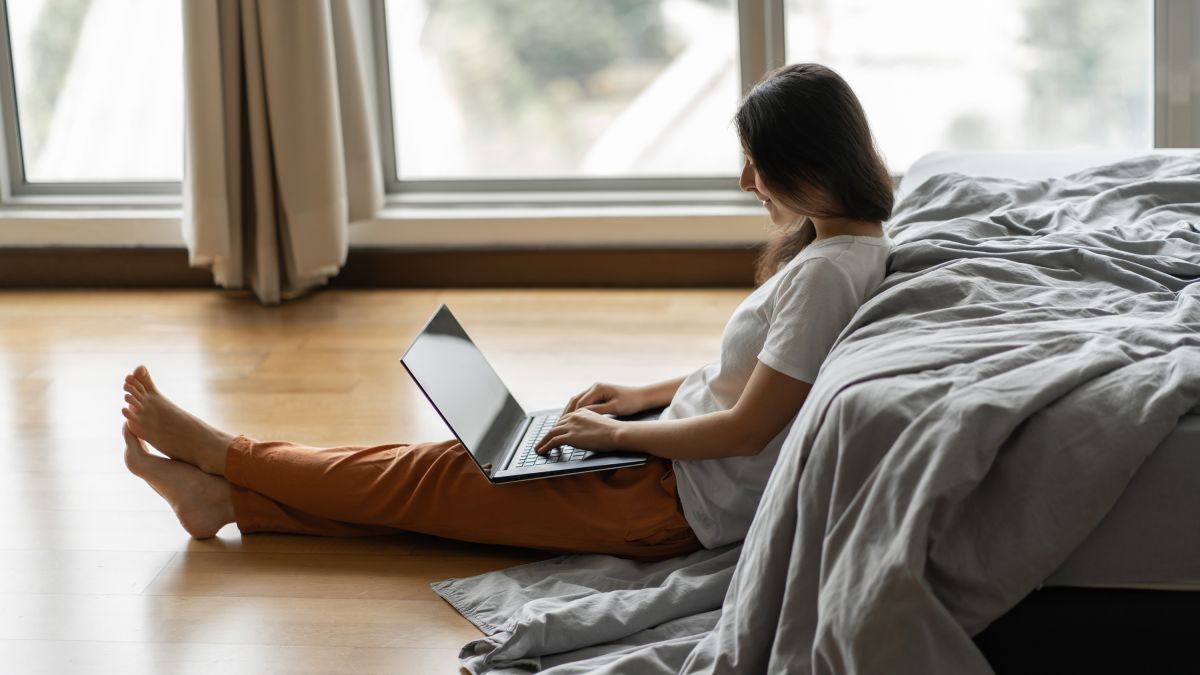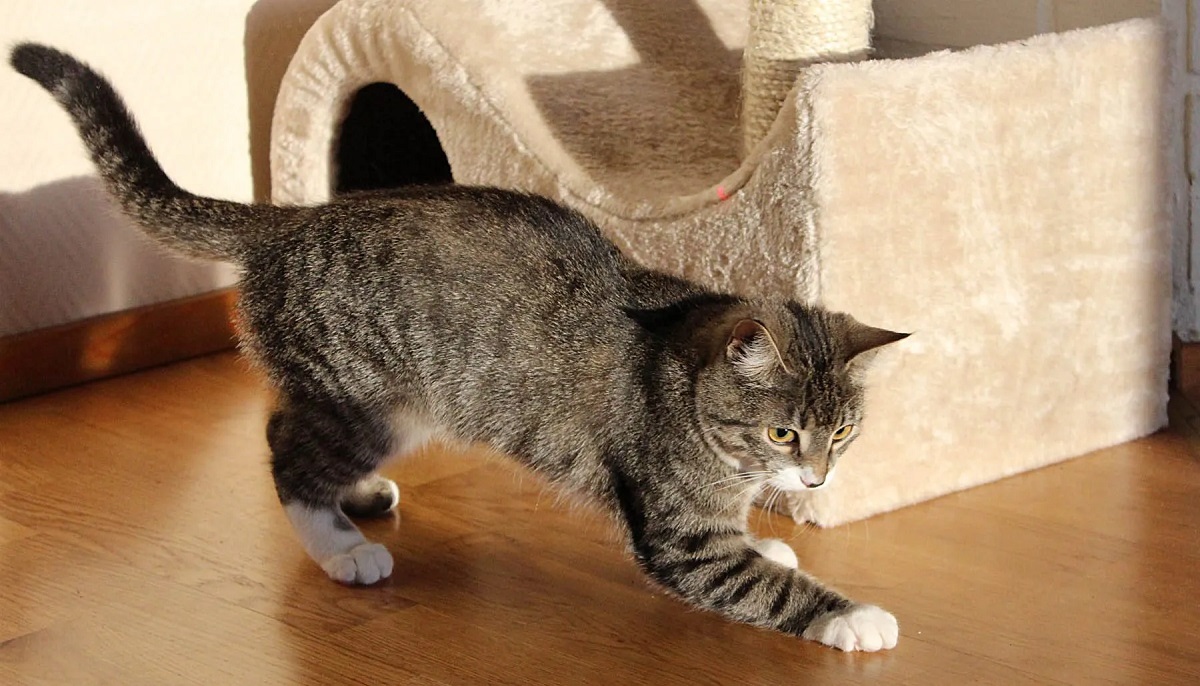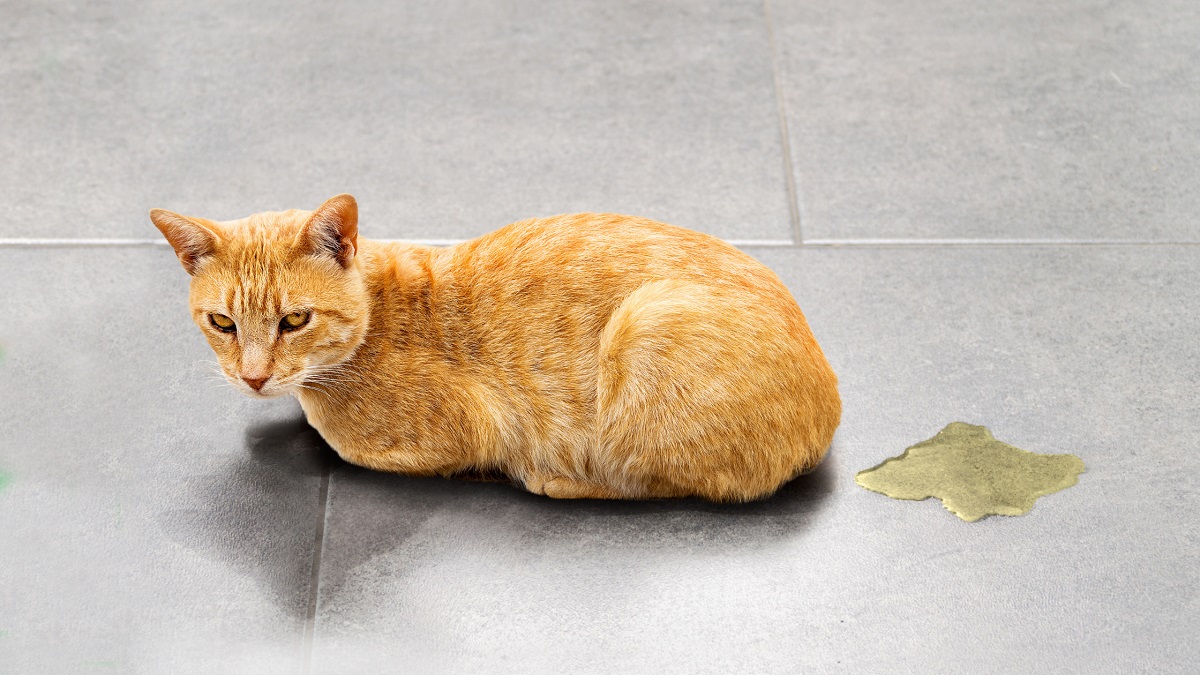

Articles
Why Do I Like Sitting On The Floor
Modified: October 20, 2024
Discover the benefits of sitting on the floor with our informative articles. Experience improved posture and flexibility while enhancing mindfulness and relaxation.
(Many of the links in this article redirect to a specific reviewed product. Your purchase of these products through affiliate links helps to generate commission for Storables.com, at no extra cost. Learn more)
Introduction
When it comes to finding a comfortable spot to relax or engage in various activities, sitting on the floor is a preference that many people can relate to. Despite the availability of various seating options like chairs, couches, and cushions, there is something unique and appealing about sitting on the floor. It may seem unconventional to some, but for those who enjoy this alternative, it offers a sense of comfort, freedom of movement, and a connection with the ground.
In this article, we will delve into the reasons why sitting on the floor is a favored option for many. From the practical benefits to the emotional connection, we will explore the various factors that make sitting on the floor a popular choice.
So, grab a cushion or find a cozy spot, as we uncover the allure of floor sitting.
Key Takeaways:
- Embrace the freedom and comfort of floor sitting, promoting relaxation, mindfulness, and a deeper connection to nature. It fosters a casual and intimate atmosphere, perfect for social gatherings and personal reflection.
- Floor seating offers versatility, adaptability, and cultural significance, evoking nostalgia and creating lasting memories. While not suitable for everyone, it provides a unique and refreshing seating experience.
Read more: Why Do Japanese Sit On The Floor
Comfort and Freedom of Movement
One of the main reasons why people enjoy sitting on the floor is the comfort it provides. Unlike chairs or sofas, which often have rigid structures or limited flexibility, sitting on the floor allows for a more relaxed and natural posture. Without the constraints of furniture, individuals can find their preferred seating position, whether it’s cross-legged, kneeling, or even lying down.
Furthermore, sitting on the floor promotes better posture and spinal alignment. With no backrest or armrest to rely on, individuals are encouraged to engage their core muscles, leading to improved posture and reduced strain on the back.
In addition to comfort, sitting on the floor offers the freedom of movement. Unlike sitting on a chair, which can restrict certain movements, sitting on the floor allows individuals to easily change positions or stretch their legs. This flexibility can be particularly beneficial during activities that require frequent movement, such as meditation, yoga, or playing with young children.
Moreover, sitting on the floor promotes a sense of groundedness and stability. The contact between our bodies and the floor creates a feeling of connection with our environment, making us more aware of our bodies and fostering a sense of balance.
So, whether it’s the comfort of finding the perfect spot or the freedom to move without restrictions, sitting on the floor offers a unique and appealing experience.
Cultural Influence
Sitting on the floor holds cultural significance in many parts of the world. In various Asian cultures, such as Japan and India, floor sitting has been a traditional seating practice for centuries. In these cultures, sitting on the floor is considered a sign of humility, respect, and closeness to the ground.
In Japan, the practice of sitting on the floor is known as “seiza,” where individuals sit with their legs folded underneath their thighs. Seiza is commonly practiced during tea ceremonies, meditation sessions, and other traditional gatherings. The posture is associated with calmness, attentiveness, and a sense of harmony with nature.
In India, floor sitting is deeply rooted in the country’s cultural and spiritual practices. Traditional seating arrangements, such as sitting cross-legged on a mat or cushion, are common during religious ceremonies, cultural events, and even daily activities like eating meals. These practices reflect the ideals of simplicity, mindfulness, and a connection to the Earth.
Throughout history, different cultures have embraced floor sitting as a way of life. Nomadic cultures, for example, often relied on sitting on the floor as they moved from place to place, using portable mats or rugs as their seating arrangements. This form of seating allowed for easy transportation and adaptation to changing environments.
Furthermore, floor sitting has influenced modern interior design and furniture trends. Many designers have incorporated the concept of floor seating, such as low-level sofas, floor cushions, and poufs, into their creations. This integration of traditional practices into contemporary settings demonstrates the lasting cultural impact of floor sitting.
In summary, cultural influences play a significant role in the popularity of sitting on the floor. It reflects deep-rooted traditions, values, and a connection to nature, making it more than just a seating preference.
Connection with the Ground
One of the unique aspects of sitting on the floor is the direct connection it provides with the ground beneath us. Unlike sitting on a chair or a raised surface, sitting on the floor allows us to feel the texture, temperature, and energy of the ground.
This connection with the ground can be both physically and emotionally grounding. Physically, when we sit on the floor, our body weight is evenly distributed across our legs and hips, creating a sense of stability. This feeling of grounding can promote a sense of relaxation and security, helping to alleviate stress and anxiety.
Emotionally, the connection with the ground can evoke a sense of closeness to nature. As humans, we have an inherent connection to the Earth, and sitting on the floor allows us to tap into that primal connection. It can help us feel more in tune with the natural world and remind us of our place within it.
In some traditions, sitting on the floor is also believed to enhance energy flow through the body. Practices such as yoga and meditation often encourage sitting directly on the ground to connect with the Earth’s energy and promote a sense of harmony and balance within ourselves.
Moreover, sitting on the floor can offer a sensory experience. Whether it’s sitting on a grassy patch, a sandy beach, or a cozy rug, the textures and sensations of the ground can enhance our sense of touch and heighten our overall sensory awareness.
In summary, sitting on the floor allows us to establish a direct connection with the ground, offering physical stability, emotional grounding, and a deeper connection to nature. This connection contributes to the overall appeal of sitting on the floor as a preferred seating choice for many.
Relaxation and Mindfulness
Sitting on the floor has long been associated with relaxation and mindfulness practices. It offers a serene and uncluttered space for individuals to unwind, focus their attention, and engage in activities that promote relaxation and mindfulness.
One of the reasons why sitting on the floor is conducive to relaxation is the absence of external distractions. Unlike sitting on a chair, which often places us at eye-level with various objects and distractions, sitting on the floor allows us to have a clear and unobstructed view of our surroundings. This minimalistic environment can help us clear our minds, reduce mental clutter, and create a sense of calmness.
In addition, sitting on the floor can enhance our ability to be present and mindful. It requires us to be aware of our body and posture, promoting mindfulness of our physical sensations and alignment. This increased body awareness can be particularly beneficial during mindfulness practices such as meditation or deep breathing exercises.
Furthermore, sitting on the floor can create a ritualistic and intentional space for self-care. By designating a specific area for relaxation and mindfulness, such as a corner of a room with a soft mat or cushions, we create a visual cue that helps us shift our mindset into a state of calmness and self-reflection.
Relaxation and mindfulness practices, such as meditation, can be further enhanced by the physical grounding that sitting on the floor provides. The connection between our bodies and the Earth can facilitate a sense of stability and presence, enabling us to fully immerse ourselves in the practice.
Sitting on the floor also prompts us to slow down and take conscious breaks. It offers an opportunity to pause our busy lives, disconnect from the fast-paced world around us, and focus on our inner peace and well-being.
In summary, sitting on the floor encourages relaxation, mindfulness, and the cultivation of a serene environment. Whether it’s practicing meditation, engaging in deep breathing exercises, or simply creating a peaceful space, sitting on the floor offers a sanctuary for relaxation and introspection.
Sitting on the floor can improve posture and flexibility, but it’s important to use proper support and cushions to avoid discomfort or strain.
Read more: Why Do I Like Chewing On My Toothbrush
Versatility and Adaptability
One of the key advantages of sitting on the floor is its versatility and adaptability to various activities and spaces. Unlike traditional seating options that are fixed in place, sitting on the floor allows for more flexibility in terms of positioning, arrangement, and functionality.
With floor seating, you can easily create a seating area that suits your specific needs. For instance, if you’re hosting a gathering or a casual get-together, arranging a circle of floor cushions or mats allows people to sit close to each other, fostering a more intimate and interactive atmosphere.
Additionally, floor seating can be easily adjusted to accommodate different numbers of people. Unlike chairs or sofas with limited seating capacity, you can add or remove cushions or mats to create a seating arrangement that fits the size of your gathering.
The adaptability of floor seating also extends to various activities. It is suitable for leisure activities such as reading, watching movies, or playing board games. The absence of rigid structures allows individuals to find comfortable positions that support their body and posture while engaging in these activities.
Furthermore, floor seating is particularly popular for activities that require flexibility and movement, such as yoga or stretching exercises. Sitting on the floor allows for free movement and easy transition between different postures and positions.
In terms of interior design, floor seating offers creative possibilities. It can be combined with other seating options or integrated into multi-functional spaces to optimize both comfort and functionality. Low-level sofas, cushions, and poufs can be strategically placed to add depth and dimension to a room while providing additional seating options.
The versatility of floor seating is not limited to indoor spaces—it can be easily transported and enjoyed outdoors as well. Whether it’s picnics in the park or beach gatherings, floor seating allows individuals to connect with nature and enjoy the surroundings in a relaxed and comfortable manner.
In summary, sitting on the floor provides versatility and adaptability that traditional seating options may not offer. It allows for customization, promotes interaction, and can be easily adjusted to accommodate different activities and spaces.
Informal and Casual Atmosphere
Sitting on the floor creates an informal and casual atmosphere that is appealing to many individuals. Unlike sitting on chairs or sofas, which often convey a more formal and structured setting, floor seating encourages a relaxed and laid-back ambiance.
One of the reasons why sitting on the floor contributes to an informal atmosphere is its association with informal gatherings and social interactions. Whether it’s a cozy night in with friends or a casual hangout, sitting on the floor allows for a closer physical proximity and fosters a sense of intimacy.
The lack of barriers, such as raised seating or armrests, facilitates easier communication and connection between people. Sitting on the floor encourages face-to-face interactions and makes it easier to engage in conversations, strengthening bonds and creating a more inviting social setting.
The informality of floor seating can also be attributed to its versatility in terms of posture and positioning. People can choose to sit cross-legged, kneel, or even lie down comfortably, reflecting a more relaxed and unpretentious vibe.
Furthermore, floor seating lends itself well to creating cozy and inviting spaces. Soft cushions, poufs, and floor mats can be arranged to create a warm and inviting seating area, inviting individuals to relax and unwind in a casual and welcoming environment.
In terms of decor, floor seating allows for the integration of various elements that add to the informal ambiance. From bohemian-inspired textiles and patterns to colorful floor cushions, the aesthetics of floor seating can be uniquely styled to create an inviting and comfortable atmosphere.
Sitting on the floor also encourages a sense of informality in daily routines and activities. It promotes a more organic and natural way of being, allowing individuals to feel at ease and free from the confines of structured seating arrangements.
In summary, sitting on the floor creates an informal and casual atmosphere that promotes a sense of intimacy, encourages social interactions, and allows individuals to unwind in a relaxed and comfortable setting.
Memories and Nostalgia
Sitting on the floor often evokes a sense of nostalgia and brings back memories of simpler times. It reminds us of childhood playfulness, family gatherings, and cultural traditions that were often centered around floor seating.
Many of us have fond memories of sitting on the floor during special occasions or family meals. Whether it’s a holiday celebration, a picnic in the park, or a cozy movie night with loved ones, floor seating has been a common element that brings people together.
These memories create a sense of nostalgia and a longing for the warmth and connectedness experienced during those moments. The act of sitting on the floor can transport us back in time, allowing us to relive those cherished memories and recapture the emotions associated with them.
In certain cultures, floor seating is deeply ingrained in traditions and customs. For example, in some Middle Eastern cultures, communal meals are often enjoyed while sitting on the floor, known as a “sajdah.” This traditional practice creates a sense of togetherness and strengthens familial and communal bonds.
Furthermore, floor seating can also remind us of our connection to our cultural heritage. Different cultures and regions have their unique traditions and practices of floor seating, which serve as a reminder of our roots and cultural identity.
Aside from specific memories, the concept of sitting on the floor itself carries a nostalgic charm. It harkens back to a time when life was simpler, seating arrangements were more informal, and social interactions were less structured. Sitting on the floor can be seen as a return to a more natural and authentic way of living.
Moreover, our memories and associations with floor seating can be passed down through generations, creating a sense of continuity and familial connection. As families gather and pass on traditions, the act of sitting on the floor becomes a symbolic link between the past, present, and future.
In summary, sitting on the floor triggers memories and nostalgia, reminding us of joyful moments spent with loved ones and cultural traditions. It connects us to our roots, evokes a sense of togetherness, and adds a touch of nostalgia to our lives.
Alternative Seating Options
While sitting on the floor offers unique benefits and appeals to many, it is important to acknowledge that it may not be suitable for everyone or every occasion. Fortunately, there are alternative seating options that provide similar comfort, flexibility, and a distinct style.
Low-Level Seating: One alternative to sitting on the floor is incorporating low-level seating furniture into your space. This includes low sofas, floor cushions, poufs, or bean bags. These options provide a relaxed and casual seating experience while still offering some elevation from the ground. They are ideal for those who desire comfort and flexibility but prefer a bit more support.
Meditation Chairs or Cushions: For individuals who practice meditation or require back support, meditation chairs or cushions can be excellent alternatives to sitting on the floor. These specially designed chairs or cushions provide ergonomic support for the back and encourage proper alignment while maintaining a close connection to the ground.
Japanese Zaisu Chairs: Zaisu chairs are a traditional Japanese alternative to floor sitting. They are low chairs with no legs, designed to support the natural posture of sitting on the floor. Zaisu chairs offer some elevation and back support while still maintaining a casual and relaxed seating experience.
Wide Cushioned Benches: Wide cushioned benches, often found in entryways or dining areas, offer a combination of comfort and versatility. They provide a more structured seating option than sitting directly on the floor while still allowing for flexibility in arranging seating positions.
Folding Chairs or Stools: Folding chairs or stools can be useful for creating temporary seating arrangements. They are lightweight, portable, and can easily be stored when not in use. Folding chairs offer convenience and stability, especially in situations where seating needs to be arranged quickly.
Outdoor Floor Seating: In outdoor settings, such as gardens or patios, floor seating options like low picnic tables, mats, or blankets can provide a relaxed and comfortable atmosphere. These alternatives allow for a closer connection to nature while enjoying the outdoors.
Ultimately, the choice of seating option depends on personal preference, comfort, and the intended use of the space. Sometimes, a combination of different seating options can offer the best of both worlds, catering to the different needs and preferences of individuals.
In summary, while sitting on the floor might not be suitable for everyone, there are a plethora of alternative seating options available. These options provide varying degrees of comfort, support, and flexibility, allowing individuals to find the seating solution that suits their unique preferences and circumstances.
Read more: Why Does My Cat Like To Sit In The Bathtub
Conclusion
Sitting on the floor is a seating preference that offers a multitude of benefits and appeals to many individuals. From the comfort and freedom of movement it provides to the cultural influences and memories it evokes, floor seating offers a unique and captivating experience.
The connection with the ground that floor seating offers fosters a sense of grounding and stability, both physically and emotionally. It allows us to feel closer to nature and in tune with our surroundings. This connection with the ground can promote relaxation, mindfulness, and a deeper sense of presence in the moment.
Culturally, sitting on the floor holds significant meaning and is associated with traditions, rituals, and family gatherings. It symbolizes humility, togetherness, and a connection to our roots. Floor seating allows us to honor and preserve these cultural practices while creating new memories and traditions of our own.
Furthermore, sitting on the floor provides versatility and adaptability to different activities and spaces. It allows for the creation of intimate and inviting seating arrangements, fosters social interactions, and promotes a casual and laid-back atmosphere. Whether it’s cozying up for a movie night or engaging in yoga and meditation, floor seating offers comfort and flexibility.
While sitting on the floor may not be suitable for everyone or every occasion, there are alternative seating options that provide similar benefits and cater to different preferences and needs. Low-level seating, meditation chairs, and folding chairs are just a few examples of the alternatives available.
In conclusion, sitting on the floor encompasses comfort, cultural significance, nostalgia, and adaptability. Whether it’s for relaxation, social gatherings, or personal reflection, floor seating offers a refreshing change from traditional seating arrangements. So, embrace the freedom, connect with the ground, and create lasting memories while enjoying the humble allure of sitting on the floor.
Frequently Asked Questions about Why Do I Like Sitting On The Floor
Was this page helpful?
At Storables.com, we guarantee accurate and reliable information. Our content, validated by Expert Board Contributors, is crafted following stringent Editorial Policies. We're committed to providing you with well-researched, expert-backed insights for all your informational needs.














0 thoughts on “Why Do I Like Sitting On The Floor”